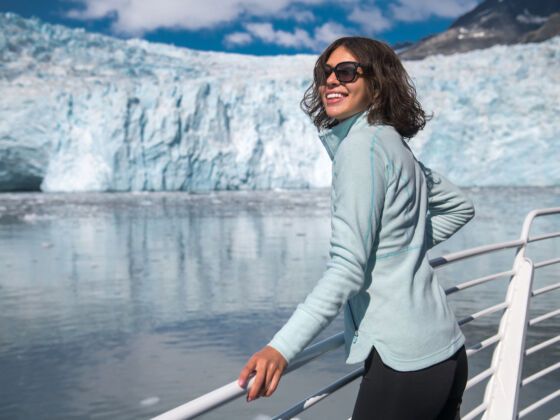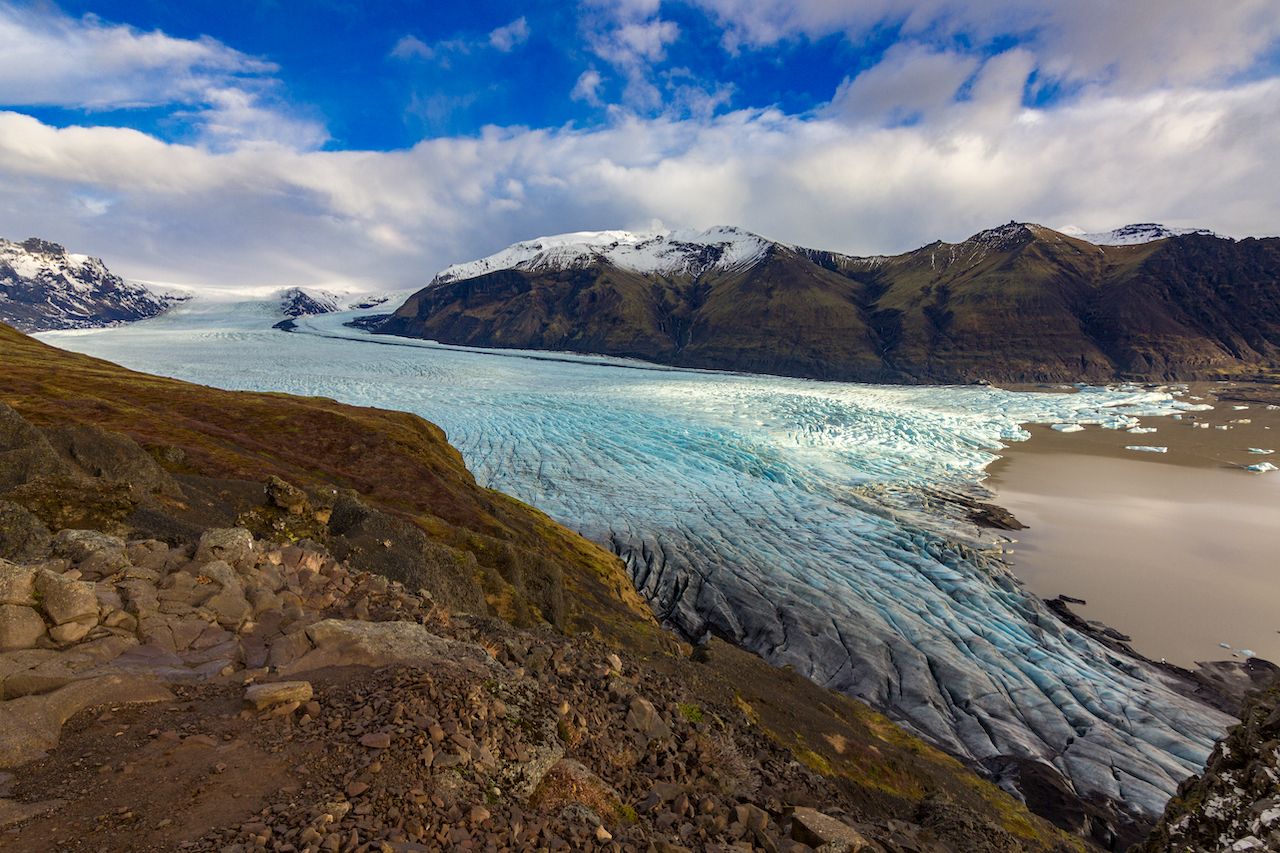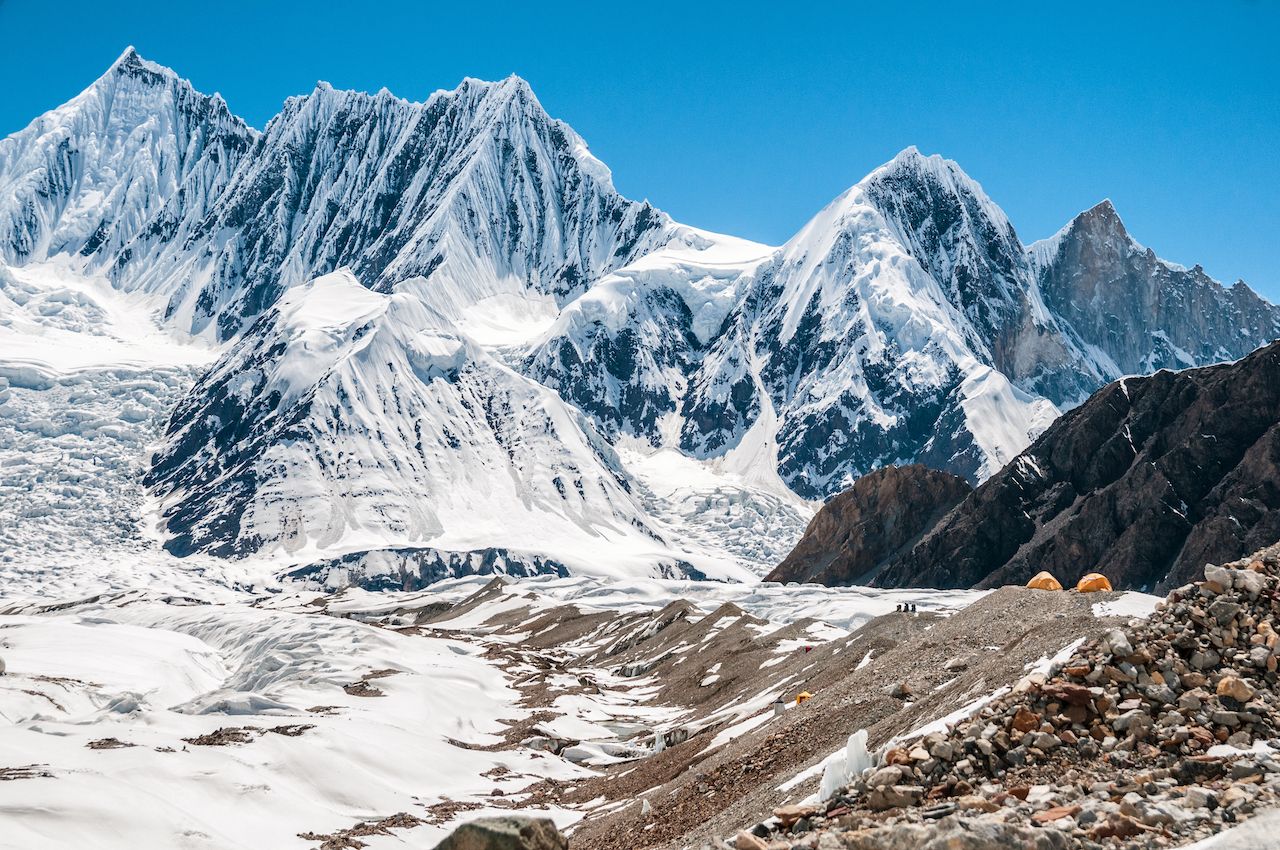North America

Photo: Luis Boucault/Shutterstock
Canada counts more than 150 glaciers, including those in vast Nunavut, but most of the easiest-to-visit are located in the well-touristed Canadian Rockies, like Jasper National Park’s Athabasca Glacier.
Athabasca creeps down from the Columbia Icefield and is reached via the Icefields Highway. Its accessibility makes it the most-visited glacier in North America. There are walking tours, as well as snow coaches.


